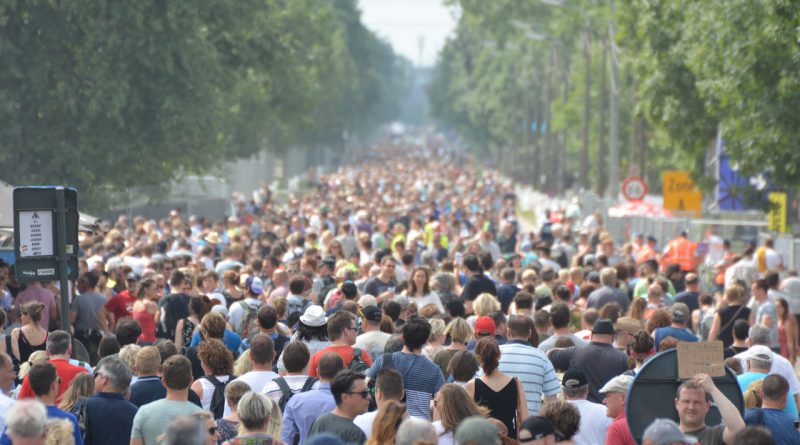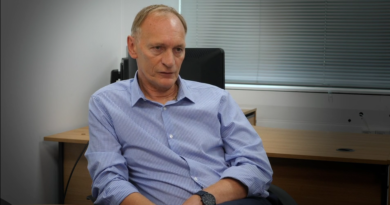Prostate cancer
How common is it?
Prostate cancer is the commonest cancer in men in the UK, with over 30,000 new cases diagnosed each year. In Scotland nearly 2,000 men are affected each year, with 200 each year in Grampian. The incidence is rising, and the lifetime risk for men developing prostate cancer is 1 in 10. However, most prostate tumours are slow-growing and may not need treatment. Others grow quickly and eventually spread to other parts of the body.
Where is my prostate?
Only men have a prostate gland. It is about the size and shap of a walnut, and lies just below the bladder and around the urethra (the tube which carries urine and semen out through the penis). The job of the prostate is to produce the fluid that mixes with sperm to form semen.
The cancer develops from cells within the prostate gland which multiply to form a tumour. The majority of prostate cancers are slow growing and many men are unaware that they have this cancer. However, a small number of prostate cancers grow more quickly and may spread to other parts of the body.
What are the symptoms?
The prostate enlarges as men get older, and most men have some symptoms affecting urination. This very common condition, known as BPH (benign prostatic hyperplasia) is not cancer. However, many of the symptoms of prostate cancer are similar to those of BPH. These include:
- having to rush to the toilet to pass urine
- passing urine more often and/or at night
- difficulty starting the flow of urine
- starting and stopping whilst passing urine
- discomfort (pain or burning) whilst passing urine
- a feeling of not having emptied the bladder fully
- dribbling of urine
- blood in urine or semen
- pain in the back, hips or pelvis.
However, all of these symptoms can also be caused by other conditions such as benign prostate enlargement. Men with any of these symptoms should consult their doctor.
Risk Factors
What causes prostate cancer?
In most cases, we do not yet know the cause of prostate cancer. Exposure to the male sex hormone testosterone and increasing age are both risk factors.
Which men are at risk?
Prostate Cancer is very rare in men under 50. The risk increases after the age of 50 with half of all cases occurring in men over 75. Men from families with a history of prostate cancer are at higher risk than normal.
Is diet linked to prostate cancer?
Some evidence suggests that a low-fat diet can reduce the risk of prostate cancer. Other studies have suggested that a diet high in tomatoes, Vitamin E, cruciform vegetables (such as broccoli, cabbage, cauliflower and brussel sprouts) and selenium can also reduce your risk. However, apart from selenium, these findings have not been confirmed.
Will a vasectomy increase the risk of prostate cancer?
There is no evidence to suggest a vasectomy increases the risk of prostate cancer.
Can prostate cancer be prevented?
Although there is no known way of preventing prostate cancer, studies have shown that men who took 200 microgrammes of selenium each day may reduce their risk of prostate cancer.
Does prostate cancer run in families?
Some families have a higher risk of prostate cancer than others. The normal risk of getting prostate cancer some time in your life is 1 in 10. Having one or more close relatives (father or brother) who got prostate cancer under the age of 70 increases your risk by two or three times.
What tests can be used to detect prostate cancer?
A number of different tests are used, but none of them is conclusive on its own.
- Rectal examination – by inserting a gloved finger into the back passage your doctor can actually feel the prostate gland, to find out whether it is larger than it should be. Even if it is enlarged, this does not mean that it is cancerous.
- PSA blood test – if the level of Prostate Specific Antigen (PSA) in your blood is too high, this may suggest that there is a prostate cancer, but there are several other conditions which cause an increase in blood PSA levels.
- Ultrasound – a small probe is inserted into the back passage and used to do an ultrasound scan, showing the exact size of the prostate.
- Biopsy – this involves taking a tiny sample of tissue from the prostate. A probe is inserted into the back passage and a small needle used to remove tiny parts of the prostate itself.
- Bone Scan – a bone scan can reveal whether there is any cancer which has spread to the bones near the prostate.
Can prostate cancer be cured?
In half or more of patients the cancer is detected at an early stage and treatment is successful for nine out of ten of these cases. The other half of the patients are not diagnosed until the cancer is advanced and has spread. Treatment can give these patients several extra years of life and stop the pain of the disease, but cannot normally cure them.
What treatments are available for prostate cancer?
- Surgery – an operation called a prostatectomy, the whole prostate gland is removed. This can be done open (conventionally), laparoscopic(keyhole) or robotic.
- Radiotherapy – in radiation treatment, high energy rays kill the cancer cells. This will help destroy the original tumour and also reduces the pain caused by tumour cells which have spread to the bones.
- Brachytherapy – this is a type of radiotherapy in which small radioactive pellets or wires are inserted directly into the prostate tumour, killing it from the inside. However, this type of treatment is not suitable for all patients.
- Cryotherapy – this is not widely available yet and is only used for small cancers of the prostate. This treatment uses liquid nitrogen to freeze the tissue of the cancer at a temperature of -50C or lower, which kills the cancer cells. This treatment is regarded as experimental for prostate cancer and is only available within trial settings.
- Hormone therapy – since the growth and division of the prostate cancer cells depends on androgens (the male hormones), drugs can be used to either reduce the level of androgens produced by the body or block the effect of androgens on the cancer cells. These stop the growth of the tumour and sometimes shrink it. However, after about two to five years, most prostate cancers go on to develop the ability to grow without androgens and the hormone therapy stops working.
What are the side-effects of prostate cancer treatment?
Due to the position of the prostate in the body there are several common effects from treating prostate cancer. These are impotence (the inability to get an erection) and incontinence ( leaking urine). Incontinence is usually temporary, and impotence can usually helped by medical treatment, but both of these problems can persist long term. Radiotherapy causes general side-effects such as tiredness and diarrhoea. These side-effects may continue for a period after the course of treatment is complete. Almost all patients receiving hormone therapy experience impotence while the treatment is being taken. Hot flushes, tiredness and weight gain are also common, but will cease when the treatment stops.




